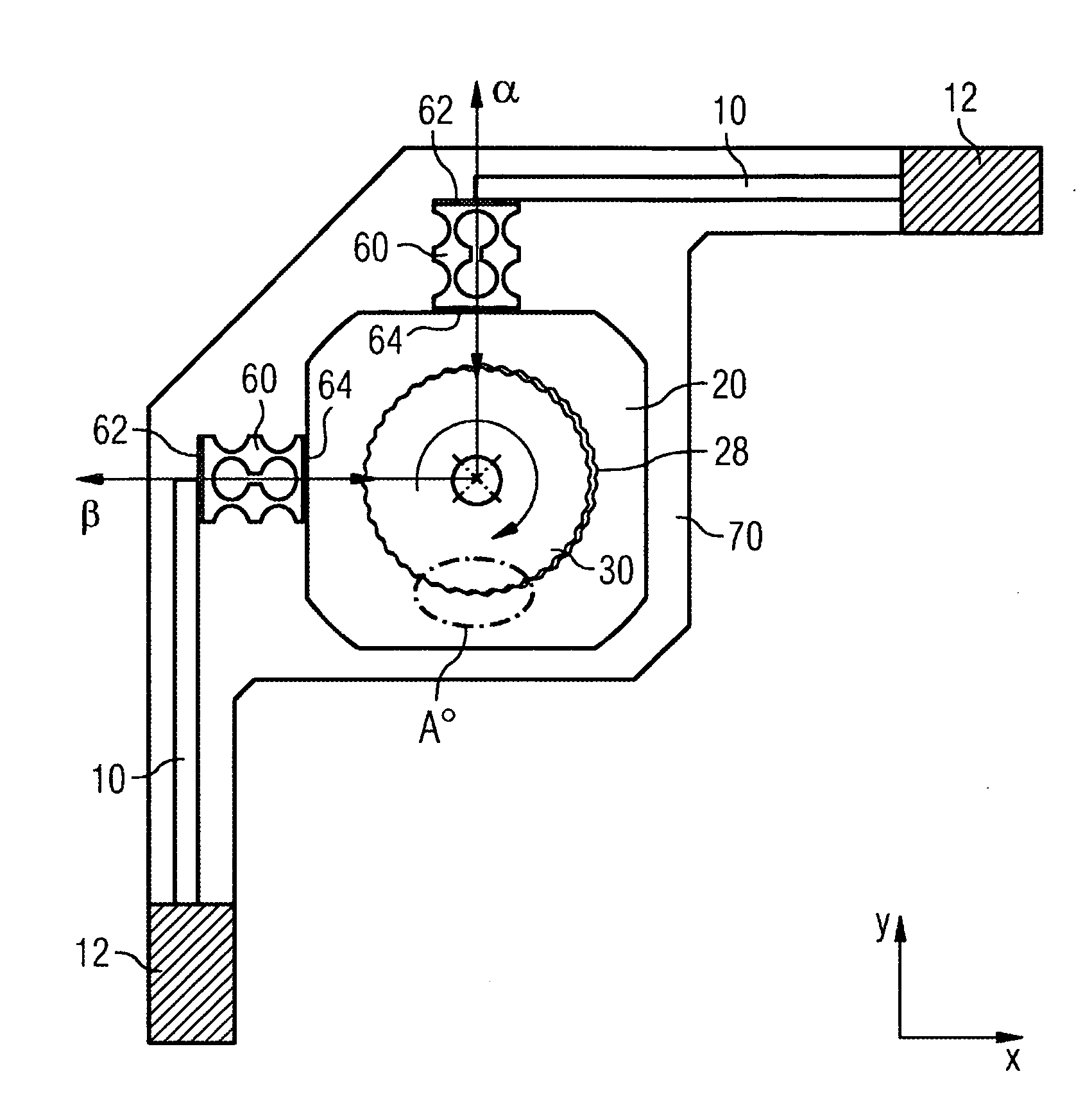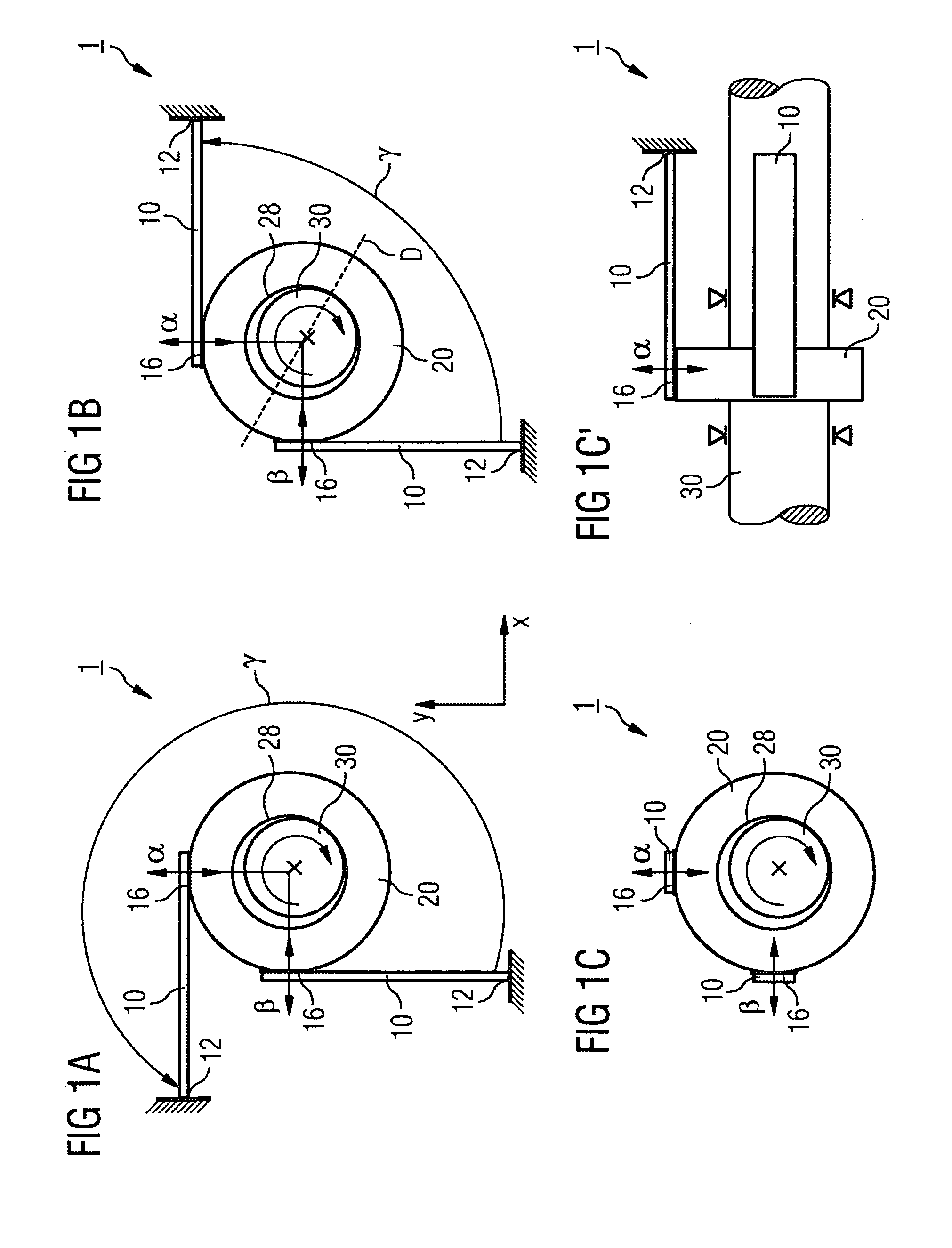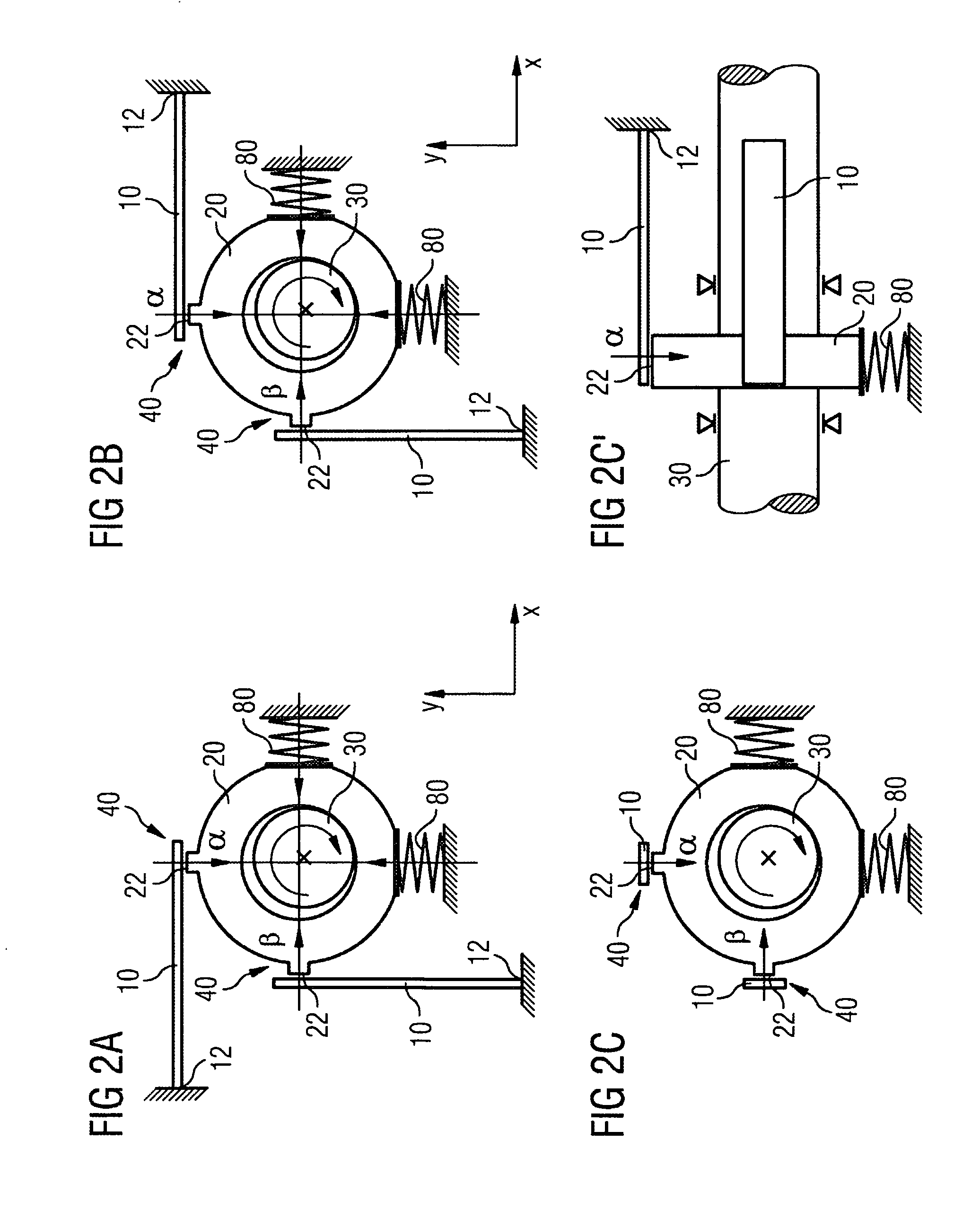Electromechanical actuating drive
a technology of electric motor and drive shaft, applied in piezoelectric/electrostrictive/magnetostrictive devices, piezoelectric/electrostriction/magnetostriction machines, electrical apparatus, etc., can solve the problems of high material cost, coils and permanent magnets are the most expensive items, and the cost of components is high, so as to achieve low energy requirements, high reliability, and small design format
- Summary
- Abstract
- Description
- Claims
- Application Information
AI Technical Summary
Benefits of technology
Problems solved by technology
Method used
Image
Examples
Embodiment Construction
[0025]Reference will now be made in detail to the preferred embodiments of the present invention, examples of which are illustrated in the accompanying drawings, wherein like reference numerals refer to like elements throughout.
[0026]A piezoelectric stepper motor 1 is presented which permits a continuous and uniform rotation to be generated by an overlaying of suitable periodic linear movements of the bending transducers 10. For that purpose the bending transducers 10 are coupled to a flat drive ring 20 in such a way that the latter can be translated in an effective plane along the effective directions α, β of the bending transducers 10. The bending transducers 10 are preferably arranged such that their effective lines or, as the case may be, effective directions α, β intersect at an angle of approximately 90°. The drive ring 20 contains a cylindrical bore 28 having a specific diameter. The bore axis runs ideally vertically with respect to the effective plane which is spanned by the...
PUM
 Login to View More
Login to View More Abstract
Description
Claims
Application Information
 Login to View More
Login to View More - R&D
- Intellectual Property
- Life Sciences
- Materials
- Tech Scout
- Unparalleled Data Quality
- Higher Quality Content
- 60% Fewer Hallucinations
Browse by: Latest US Patents, China's latest patents, Technical Efficacy Thesaurus, Application Domain, Technology Topic, Popular Technical Reports.
© 2025 PatSnap. All rights reserved.Legal|Privacy policy|Modern Slavery Act Transparency Statement|Sitemap|About US| Contact US: help@patsnap.com



